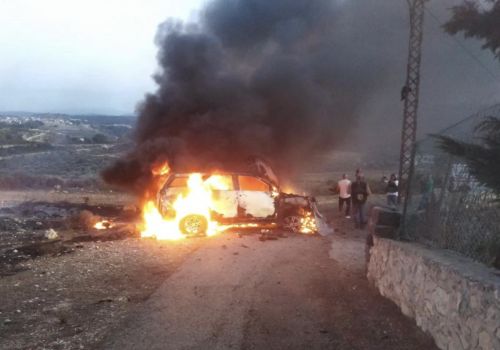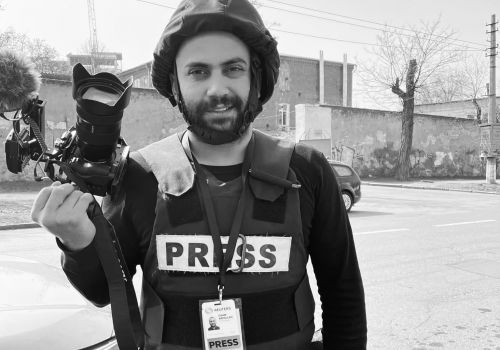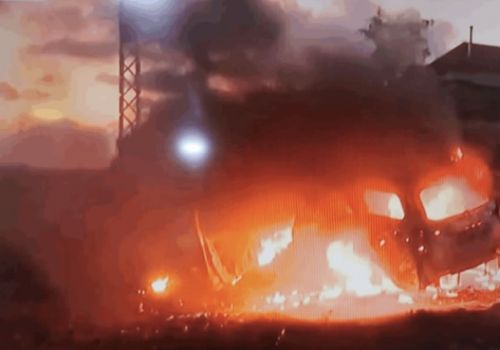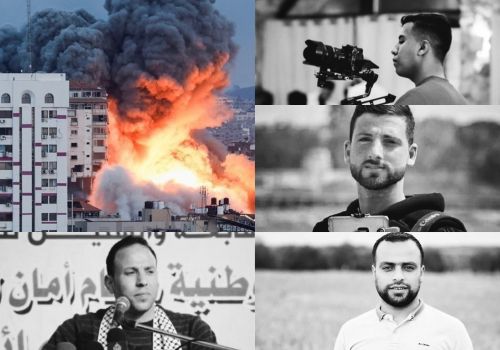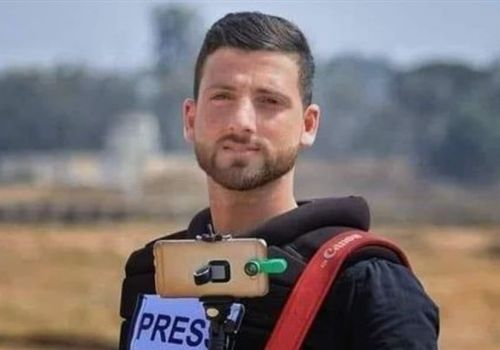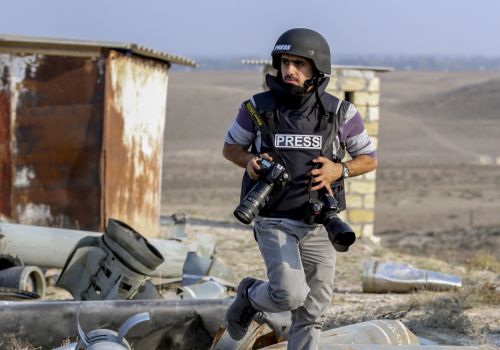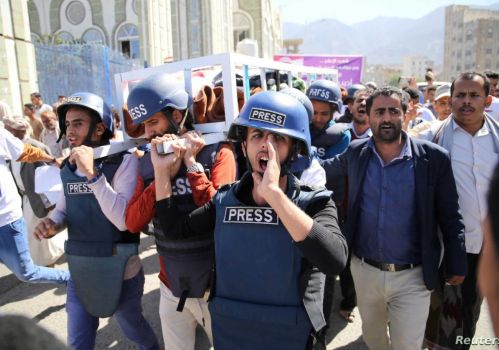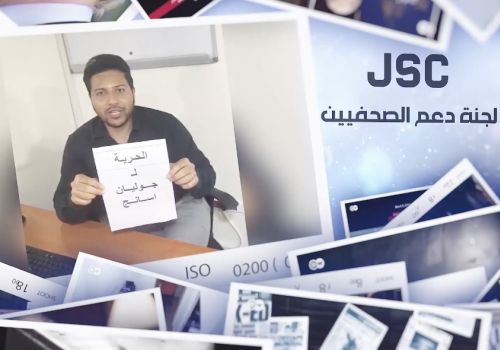Pandemic-born Visual forensic Team: Analysing and Verifying Open-source Videos While Covering Time-sensitive Stories
2022-06-08 08:45
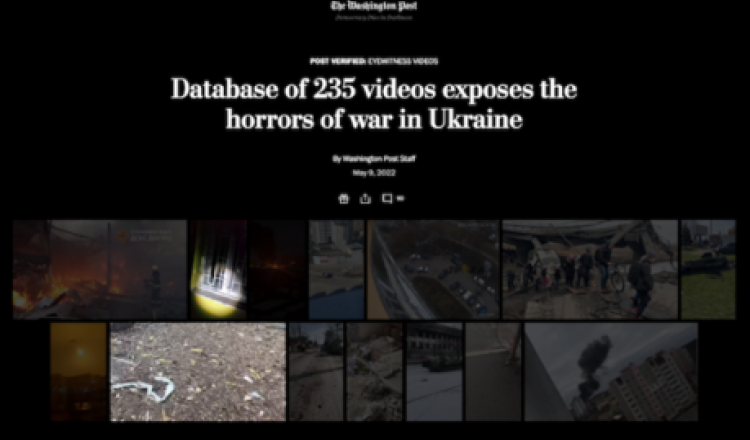
Credit: Screenshot via The Washington Post's database of Ukrainian videos
A specialist video verification and production team proved valuable when the war in Ukraine broke out. Now the team is expanding to increase output of its widely-viewed content
We all know that misinformation can spread like wildfire online. We also know that video requires plenty of time and patience. What happens when you need to deal with the two together: covering a time-sensitive story on a time-intensive medium?
The Washington Post launched a visual forensic team less than two years ago. This small, pandemic-born team is now doubling in size, but still working remotely across the US and abroad.
The team comprises of a handful of specialist reporters analysing and verifying open-source, on-the-ground videos from major news events. It then turns its findings into powerful reconstruction videos to show how complex news moments have unfolded, helping readers understand what happened.
It picked up a duPont award in February last year for a timeline of Trump's photo op at Lafayette Square, recognising "outstanding audiovisual journalism in the public interest". It has also reconstructed the death of George Floyd, the siege on the US Capitol and many other urgent stories.
Fast forward two years and the team has turned its attention to the situation in Ukraine, verifying the "daily firehose" of content circulating online according to visual forensic lead and executive producer Nadine Ajaka, speaking on a podcast with Journalism.co.uk.
Her team has also created a database of verified UGC videos from the Ukraine war, intended for both general audiences and resource-strapped news outlets to use (with credit).
The verification shop and production studio
The reporters have to move quickly, geolocating video and confirming coordinates, and if needed, sending visuals to weapons experts about munitions to confirm, deny or shed new light on a narrative.
For a remote team, the lack of a physical newsroom poses some limitations, particularly around editing feedback. It means there is a lot of exporting, sharing, editing and re-exporting. Ajaka says that the upside is high productivity, as scattered colleagues can be more agile and responsive to unfolding events.
The team has heavily documented workflows within Slack, Zoom, Adobe Premiere and Dropbox Paper (a real-time editing tool), so that team members can jump in easily.
The specific workflow of a story tends to vary from one to another. But generally, it starts with a base-level question: what are the most urgent questions around a particular event and how can visuals help to answer those?
Ajaka says that if there is a contained number of hours to focus on, that can really help to do a clean, broad cull of all the assets which are available across social media, official statements and wider sources. The team then gets to work stitching everything together.
Because the final video will be a cohesive, linear timeline of events, there can be no blind spots. There must be visuals that speak to every element of the story, but the advantage of video is that it can be paused while a narrator delivers a voiceover. The same effect cannot be achieved in text, for instance.
Ultimately, visual forensics work best when the video can offer a new take or an exclusive on a story and there are scenarios in which multiple things need to be shown simultaneously, like audio recordings (interviewees or police radio chatter), side-by-side video shots, and bringing to life other documents (the team has digitised firefighter and ambulance reports). In other words, there is a lot more legwork than simply verifying video.
"Sometimes, open source intelligence is portrayed as the most objective form of reporting, or the holy grail in a world where journalistic reliance on official statements is rightfully being reassessed," says Ajaka.
"At the same time, the work of deciphering these visuals is almost a small part of the entire story. We always have to supplement with other forms of rigorous reporting, such as contacting sources, getting in touch with law enforcement, getting comment and so on. It's never solely about what the visuals show, it’s a multifaceted effort."
The wider vision
There has to be a good reason to justify expanding the team, right?
The videos are uploaded to both The Washington Post website (behind its paywall) and its YouTube account (where it can be viewed for free - and routinely fetch millions of views per video).
That is not insignificant from a monetisation point of view, but Ajaka says the channel has run into issues around videos being demonetised or age-restricted due to the nature of the content.
Two million views on a YouTube video means a high percentage of non-subscribers, and she thinks this creates a potential pathway for that to change.
"We always say: 'You can watch our videos for free on youtube, but please know the support we get from subscriptions is what makes the work possible'.
"That messaging we frame around stories and there is truly no limit to the audience you can get on YouTube, and in a way that’s very different from the site."
The visual forensic team does not have strict targets. But one of the goals of its expansion is to increase output, which is a major priority moving forward. That is assessed over a quarterly or annual period because different videos require different lengths of time to put together.
Success is measured through impact whether that is findings played at Supreme Court hearings or what the comments say on YouTube. Ajaka is currently on maternity leave and has left Elyse Samuels in charge of keeping on top of output and embedding in new hires.

